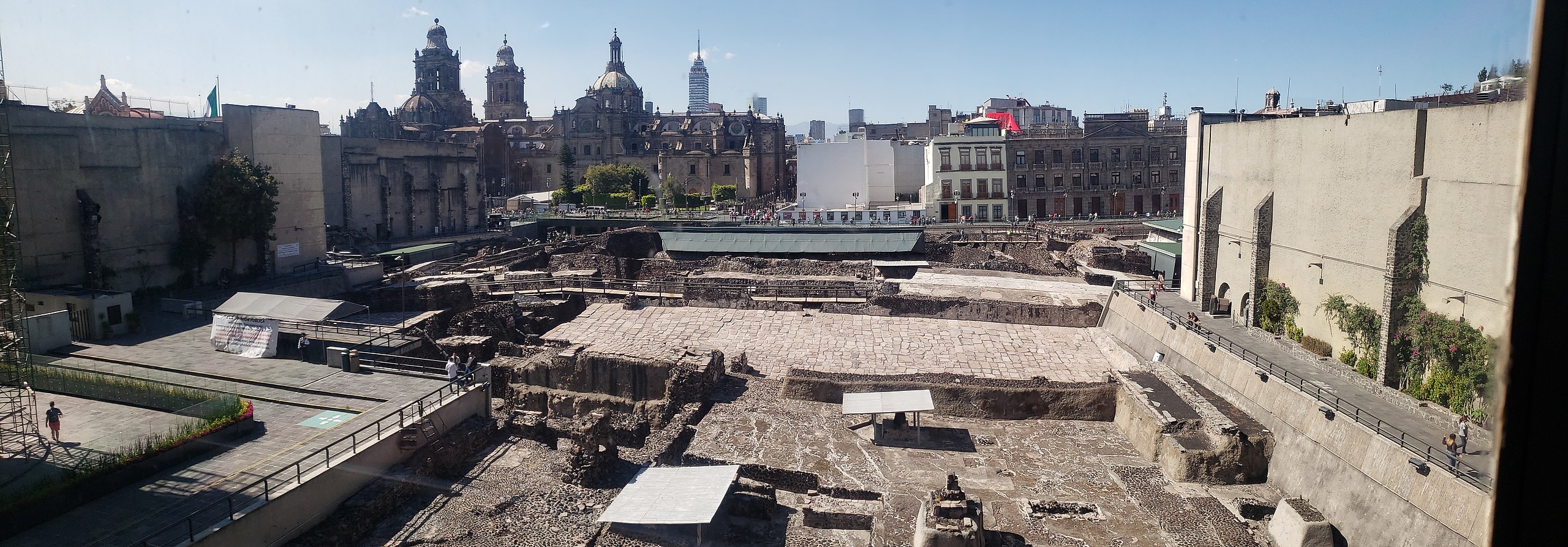

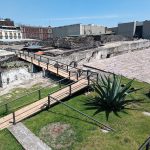 This archaeological site was the most important temple of Mexico Tenochtitlan. It was at the center of the political and religious life of the Mexica society. The temple itself consisted of four pyramids and ended in two shrines dedicated to, respectively, the gods of water (Tlaloc) and war (Huitzilopochtli). The House of the Eagles, the Temple of the god Ehécatl, a ceremonial tree at the foot of the stairway, the Huey Tzompanli, the Ball Game court, and the Calmécac were also part of the larger complex.
This archaeological site was the most important temple of Mexico Tenochtitlan. It was at the center of the political and religious life of the Mexica society. The temple itself consisted of four pyramids and ended in two shrines dedicated to, respectively, the gods of water (Tlaloc) and war (Huitzilopochtli). The House of the Eagles, the Temple of the god Ehécatl, a ceremonial tree at the foot of the stairway, the Huey Tzompanli, the Ball Game court, and the Calmécac were also part of the larger complex.
Today the museum presents more than 3,000 important artifacts of Mexica culture. These are presented within the archaeological zone and include offerings, burials, stages of construction of the site, and objects from the colonial occupation.
Heart of Mexico Walking Route: Zócalo – Ruta Templo Mayor
< < Metropolitan Cathedral | National Palace > >
This was the base of a monumental pyramid with two temples at its summit. These were dedicated to Tláloc and Huitzilopochtl, respectively. It served as the epicenter of the sacred district of Tenochtitlan. It was dismantled after the war of 1519 to 1521. Private homes were built on the ruins. Only at the beginning of the 20th century did Manuel Gamio excavate the grounds of the Cathedral Seminary and he discovered some parts of the old temple. In 1978, more remains were discovered and the rescue of the Templo Mayor, the House of the Eagles, and surrounding buildings began. Today, the site museum was designed by architect Pedro Ramírez Vázquez. Thousands of artifacts are preserved. Most prominent are the monolith of the goddess Coyolxauhqui and that of the goddess Tlaltecuhtli.
Heart of Mexico Walkin Route: Ancient Route
< < Ehécatl Temple | Vestigios del Calmécac > >
Proyecto “Corredor de Cultura Digital”.
Nombre de la investigación:
Investigación Centro Histórico, Monumentos, Edificios y Puntos de Interés (2023)
Dirección de investigación y diseño de Rutas:
Acércate al Centro A.C.
Guadalupe Gómez Collada
Coordinación e investigación histórica:
Fideicomiso del Centro histórico
Dir. Maestra Loredana Montes
[caption id="attachment_11825" align="alignright" width="120"] Route of the
Route of the
Resistance[/caption]
The Great Temple, the Templo Mayor, is what many visitors expect to find at the much better attended Museum of Anthropology. The difference is that the Anthropology Museum has the mission of collecting and educating on all of the cultures of Mexico. The Templo Mayor is dedicated just to understanding and exploring the center, and to a great extent, the empire, of Mexico-Tenochtitlán. The museum is part of the archaeological zone to the north and east of the Metropolitan Cathedral.
The Templo Mayor site includes a series of constructions, buildings, pyramids and shrines. The main tower had two teocalli shrines atop and from there, one could stroll down onto all of the most important aspects of the political, religious and economic life of the city. Today, all of this is complemented by a major museum whose permanent collection is among the most important in the city.
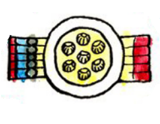 Barrio Atzacoalco
Barrio Atzacoalco difusion.mntm@inah.gob.mx
difusion.mntm@inah.gob.mx
 55 4040 5600
55 4040 5600
 http://www.templomayor.inah.gob.mx/
http://www.templomayor.inah.gob.mx/
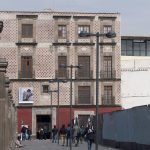
Nearest at 0.06 kms.

Nearest at 0.07 kms.

Nearest at 0.08 kms.
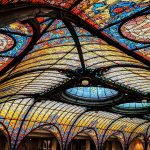
A landmark hotel on the edge of Mexico City's main plaza . . .

There's no center like the very center, and in Mexico City, that means el Zócalo!

One of Mexico City's proudest, most enormous parts of history, the Palacio dominates the entire east of the Zocalo.
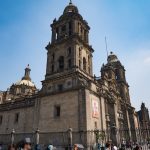
The first Cathedral to have been built in the Americas.

Among the earliest on the buildings on the Zócalo, it's still the seat of City government.